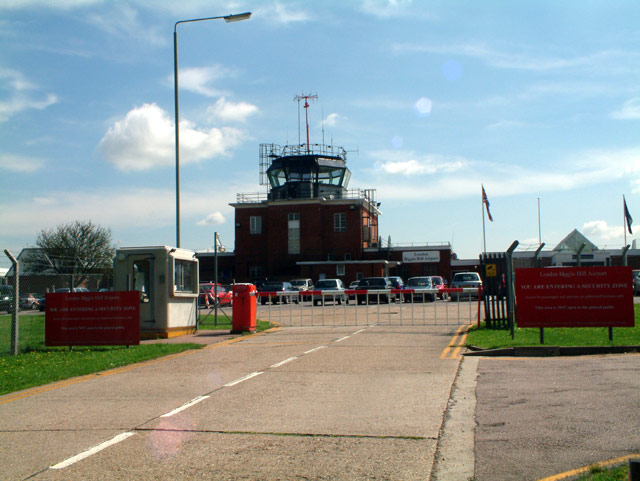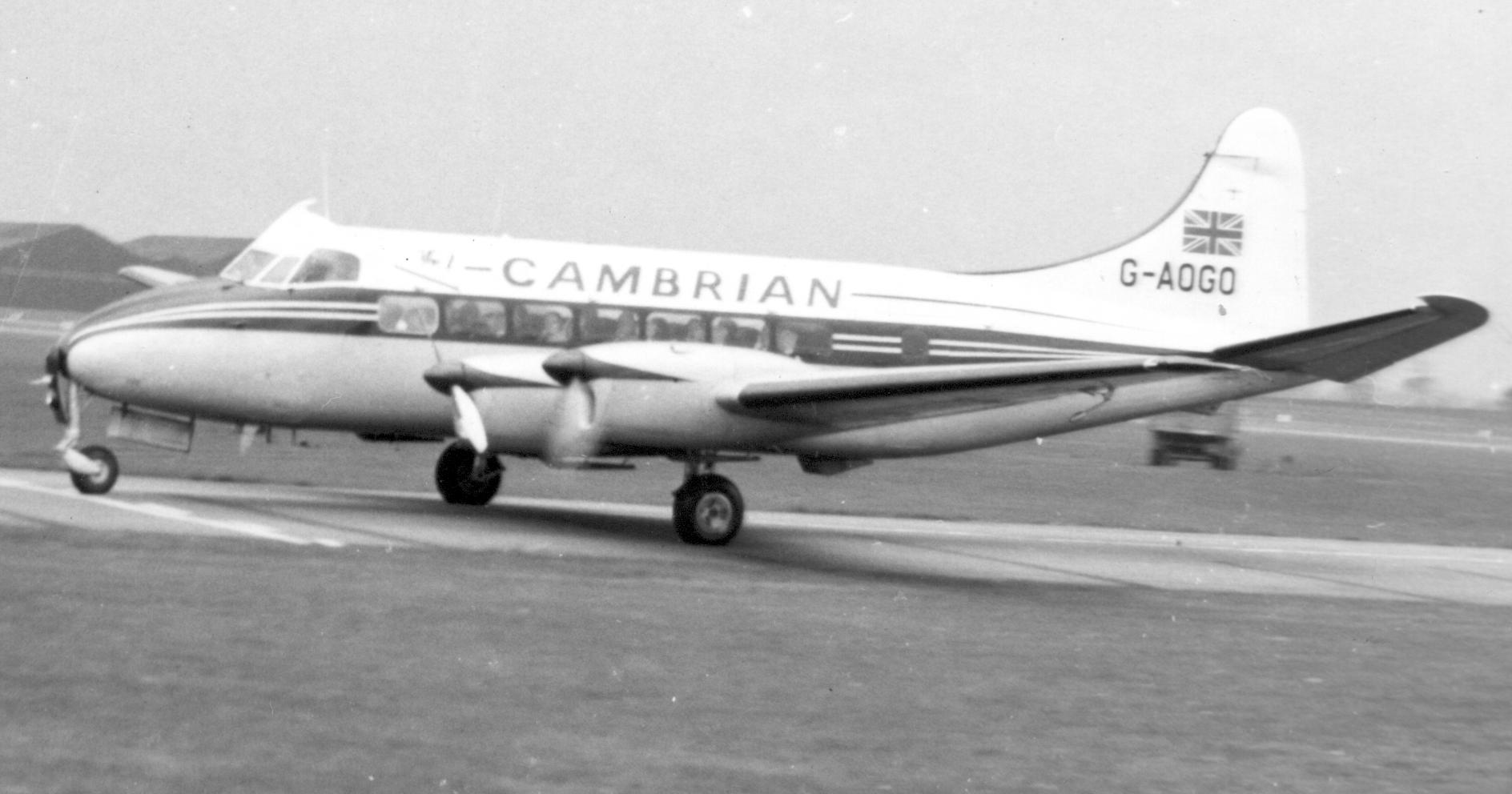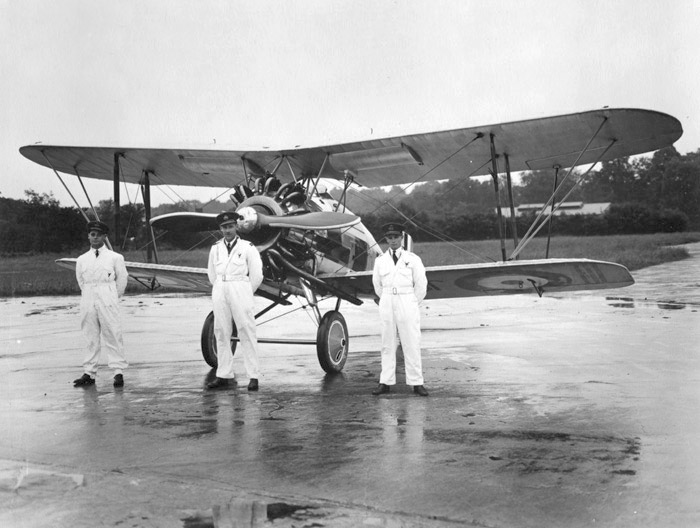|
RAF Fairwood Common
Royal Air Force Fairwood Common or more simply RAF Fairwood Common is a former Royal Air Force Sector station located at Fairwood Common on the Gower Peninsula to the west of Swansea. It is now the location of Swansea Airport. History RAF Fairwood Common was built on what was originally common land during the World War II, Second World War. The aerodrome was declared operational on 15 June 1941 after taking nearly a year to develop. Built as a day and night fighter station elements of the first day fighter squadron arrived on 14 June 1941 (No. 79 Squadron RAF, 79 Squadron equipped with Hawker Hurricane Mk.II aircraft). On 17 June 1941 the first night fighter squadron arrived (a flight of No. 600 Squadron RAF, 600 Squadron equipped with Bristol Beaufighter Mk.II aircraft) and by the end of June 1941 a second Hurricane equipped day fighter squadron arrived (No. 317 Polish Fighter Squadron). The aerodrome became a No. 10 Group RAF, 10 Group RAF Fighter Command Sector Station with ... [...More Info...] [...Related Items...] OR: [Wikipedia] [Google] [Baidu] |
Gower Peninsula
Gower ( cy, Gŵyr) or the Gower Peninsula () in southwest Wales, projects towards the Bristol Channel. It is the most westerly part of the historic county of Glamorgan. In 1956, the majority of Gower became the first area in the United Kingdom to be designated an Area of Outstanding Natural Beauty. Until 1974, Gower was administered as a rural district. It was then merged with the county borough of Swansea. From 1974 to 1996, it formed the Swansea district. Since 1996, Gower has been administered as part of the unitary authority of the City and County of Swansea. Since its establishment in 1999, the Gower Senedd constituency has only elected Labour members. The Gower constituency in Westminster had previously also elected only Labour Members of Parliament (MPs) since 1908; the longest run (with Normanton and Makerfield) of any UK constituency. This ended in 2015 when the Conservatives took the seat. In 2017, it returned to Labour. The area of both constituencies covers the ... [...More Info...] [...Related Items...] OR: [Wikipedia] [Google] [Baidu] |
RAF Angle
Royal Air Force Angle, or more simply RAF Angle, is a former Royal Air Force station located on the Angle Peninsula Coast, west of Pembroke, Pembrokeshire, Wales. It was operational from 1 June 1941 to 11 July 1946, having been used by both the Royal Air Force and the Royal Navy. The village of Angle, Pembrokeshire, Angle is north of the airfield, which is located along the coast. Notable landmarks are, Freshwater West beach to the south of the airfield, and the St. Gowans lightship, south of Linney Head. History Angle airfield was constructed with six fighter dispersal pens, each with room for four Spitfire aircraft, which were located on the south east side, and the Air traffic control#Airport traffic control tower, watchtower was in one of the corners of the airfield, facing south-west. The airfield had three runways, constructed in triangular pattern, measuring: 1463 m (4800 ft) long, 914 m (2999 ft) long, and 1097 m (3599 ft) long. Angle ... [...More Info...] [...Related Items...] OR: [Wikipedia] [Google] [Baidu] |
List Of Former Royal Air Force Stations
This list of former RAF stations includes most of the stations, airfields and administrative headquarters previously used by the Royal Air Force. The stations are listed under any former county or country name which was appropriate for the duration of operation. It has been stated that RAF stations took their name from the civil parish in which the station headquarters was located, rather than the nearest railway station (e.g., Binbrook has never had a railway station), but there are many exceptions. __TOC__ British Isles Chain Home, Chain Home Low, Chain Home Extra Low, ROTOR and tropo-scatter stations Notes: Some of the Chain Home Low sites were co-located with the larger Chain Home radars. Chain Home Extra Low equipment was co-located with "Chain Home" and "Chain Home Low" as well as at separate sites, but were of a less permanent nature, usually with mobile equipment. ROTOR was the post war Radar interception system created from existing radar installations. NARS ... [...More Info...] [...Related Items...] OR: [Wikipedia] [Google] [Baidu] |
Cambrian Airways Ltd
Cambrian Airways was an airline based in the United Kingdom which ran operations from Cardiff Airport and Liverpool John Lennon Airport between 1935 and 1974. It was incorporated into British Airways when BOAC, BEA, Cambrian and Northeast merged on 1 April 1974. History Cambrian was set up on 25 April 1935 as Cambrian Air Services. The airline's base was at Pengam Moors airfield located to the east of Cardiff. The first aircraft to be operated was a single de Havilland DH.60 Moth, with the main activity of training pilots, and flights for tourists. With the outbreak of World War II, Cambrian stopped its activities.March and Wright 1972, p. 100. Commencing on 1 January 1946 it was the first British airline to restart operations after the war, with a charter flight with an Auster Autocrat with a cargo of wire rope and an aircraft seat between Cardiff airport and Bristol. In 1948 Cambrian was flying in cooperation with BEA and used the de Havilland Dragon Rapide, the Autocr ... [...More Info...] [...Related Items...] OR: [Wikipedia] [Google] [Baidu] |
Douglas Bader
Group Captain Sir Douglas Robert Steuart Bader, (; 21 February 1910 – 5 September 1982) was a Royal Air Force flying ace during the Second World War. He was credited with 22 aerial victories, four shared victories, six probables, one shared probable and 11 enemy aircraft damaged. Bader joined the RAF in 1928, and was commissioned in 1930. In December 1931, while attempting some aerobatics, he crashed and lost both his legs. Having been on the brink of death, he recovered, retook flight training, passed his check flights and then requested reactivation as a pilot. Although there were no regulations applicable to his situation, he was retired against his will on medical grounds. After the outbreak of the Second World War in 1939, however, Douglas Bader returned to the RAF and was accepted as a pilot. He scored his first victories over Dunkirk during the Battle of France in 1940. He then took part in the Battle of Britain and became a friend and supporter of Air Vice Marshal ... [...More Info...] [...Related Items...] OR: [Wikipedia] [Google] [Baidu] |
Airfields Of Britain Conservation Trust
The Airfields of Britain Conservation Trust (ABCT), founded 2006, is a non-profit organisation that works to preserve and protect airfields in Great Britain, as well as educating people about their history. The Trust is a registered charity. They place inscribed memorial stones on or near disused airfields, which have included a memorial at Fambridge, Essex in February 2009, at Windermere in Cumbria in 2011 and at Montrose Air Station Heritage Centre in May 2012. Other memorial locations include Harrowbeer, Hatfield, Lanark, Leavesden, Matlaske, Okehampton, Podington, Swannington, Westcott and Woburn Park Woburn Abbey (), occupying the east of the village of Woburn, Bedfordshire, England, is a country house, the family seat of the Duke of Bedford. Although it is still a family home to the current duke, it is open on specified days to visitors, .... References External links * Charities based in Glasgow Conservation in the United Kingdom Aviation history of ... [...More Info...] [...Related Items...] OR: [Wikipedia] [Google] [Baidu] |
412 Transport Squadron
No. 412 Transport Squadron is one of three Royal Canadian Air Force (RCAF) transport squadrons attached to Ottawa, Ontario. The squadron operates with a strength of about 29 out of the ''Pilot Officer John Gillespie Magee, Jr. Annex.'' ''The Annex'' officially opened on January 11, 1995. No. 412 Squadron began as a unit of the RCAF during the Second World War. History Second World War No. 412 (Transport) Squadron was formed in 1949, but traces its history back to two separate squadrons: Number 12 Communications Flight at RCAF Station Ottawa and 412 (Fighter) Squadron, which was formed at RAF Digby, England on 30 June 1941. John Gillespie Magee, the author of the famous aviation poem, ''High Flight'', was serving with 412 Squadron when he was killed in a mid-air collision in his Spitfire in 1941. No. 412 Squadron (squadron code 'VZ') was equipped with the Supermarine Spitfire Vb and served at a number of RAF Stations in the United Kingdom In October 1943, the squadron jo ... [...More Info...] [...Related Items...] OR: [Wikipedia] [Google] [Baidu] |
403 Helicopter Operational Training Squadron
403 "City of Calgary" (Helicopter) Operational Training Squadron (403 Sqn) is a squadron of the Royal Canadian Air Force (RCAF) located at Canadian Forces Base Gagetown. It is equipped with CH-146 Griffons and provides operational aircrew training to the crews who will fly the helicopter. The squadron also conducts operational test and evaluation, develops aviation tactics and carries out operations in support of the 1 Wing mission. It also supports the local Army requirements of the Combat Training Centre. It was founded as No. 403 Squadron RCAF. A pilot will spend three months at Gagetown learning to fly the Griffon before being posted to one of 1 Wing's five operational squadrons. While at Gagetown, pilots learn advanced aircraft handling, including slinging and hoisting, tactical formation, flying and low-level tactical flying. History World War II No. 403 (Fighter) Squadron RCAF was formed at RAF Station Baginton (now Coventry Airport), Warwickshire, England, on 1 March ... [...More Info...] [...Related Items...] OR: [Wikipedia] [Google] [Baidu] |
402 Squadron
402 "City of Winnipeg" Squadron (french: links=no, 402e Escadron) is a Royal Canadian Air Force squadron based in Winnipeg, Manitoba, Canada Pre-war history 402 Squadron began on 5 October 1932 as Number 12 Army Co-operation Squadron, a unit of the non-permanent active Air Force. During the early years, meetings were held in Minto Armories, while flying facilities were based at Stevenson Field, now Winnipeg James Armstrong Richardson International Airport. The aircraft flown included a number of Avro Tutors, de Havilland Gipsy Moths and a few other light aircraft. On 15 November 1937, No. 12 Army Cooperation Squadron was renumbered No. 112 Army Cooperation Squadron, flying a variety of aircraft types including the Avro 626 and de Havilland Tiger Moth.McNorgan 2007, p. 25. The Second World War After the outbreak of war, No. 112 Squadron was sent to Ottawa in February 1940, and re-equipped with the Westland Lysander, stocks of which were left behind when No. 110 Squadron was p ... [...More Info...] [...Related Items...] OR: [Wikipedia] [Google] [Baidu] |
401 Tactical Fighter Squadron
No. 401 Tactical Fighter Squadron , a.k.a. "City of Westmount" Squadron (originally No. 1 Squadron), is a Royal Canadian Air Force squadron based at CFB Cold Lake. During World War II it was a fighter squadron and is notable for having fought in the Battle of Britain. Postwar, the squadron operated in Canada as an auxiliary squadron, reserve squadron and a helicopter and training squadron. In 2015 it was reactivated as a Tactical Fighter Squadron. History Formation No. 1 Squadron Royal Canadian Air Force was formed as a fighter unit at Trenton, Ontario on 21 September 1937 with Siskin aircraft. The squadron was formed from the Fighter Flight of No. 3 (Bomber) Squadron. In August 1938, the squadron moved to Calgary, Alberta, and was re-equipped with Hawker Hurricane aircraft in February 1939. While stationed in Calgary, the squadron was commanded by S/L Elmer Garfield Fullerton. It was mobilized at Saint-Hubert, Quebec on 10 September 1939, and on 5 November 1939 it moved to ... [...More Info...] [...Related Items...] OR: [Wikipedia] [Google] [Baidu] |
India
India, officially the Republic of India (Hindi: ), is a country in South Asia. It is the seventh-largest country by area, the second-most populous country, and the most populous democracy in the world. Bounded by the Indian Ocean on the south, the Arabian Sea on the southwest, and the Bay of Bengal on the southeast, it shares land borders with Pakistan to the west; China, Nepal, and Bhutan to the north; and Bangladesh and Myanmar to the east. In the Indian Ocean, India is in the vicinity of Sri Lanka and the Maldives; its Andaman and Nicobar Islands share a maritime border with Thailand, Myanmar, and Indonesia. Modern humans arrived on the Indian subcontinent from Africa no later than 55,000 years ago., "Y-Chromosome and Mt-DNA data support the colonization of South Asia by modern humans originating in Africa. ... Coalescence dates for most non-European populations average to between 73–55 ka.", "Modern human beings—''Homo sapiens''—originated in Africa. Then, int ... [...More Info...] [...Related Items...] OR: [Wikipedia] [Google] [Baidu] |
Firth Of Clyde
The Firth of Clyde is the mouth of the River Clyde. It is located on the west coast of Scotland and constitutes the deepest coastal waters in the British Isles (it is 164 metres deep at its deepest). The firth is sheltered from the Atlantic Ocean by the Kintyre peninsula, which encloses the outer firth in Argyll and Ayrshire. The Kilbrannan Sound is a large arm of the Firth of Clyde, separating the Kintyre Peninsula from the Isle of Arran. Within the Firth of Clyde is another major island – the Isle of Bute. Given its strategic location at the entrance to the middle and upper Clyde, Bute played a vital naval military role during World War II. Geography At its entrance, the firth is about wide. At one area in its upper reaches, it is joined by Loch Long and the Gare Loch. This area includes the large anchorage off of Greenock that is known as the Tail of the Bank. (The “Bank” is a reference to the sandbank and shoal that separates the firth from the estuary of the Ri ... [...More Info...] [...Related Items...] OR: [Wikipedia] [Google] [Baidu] |
.jpg)





